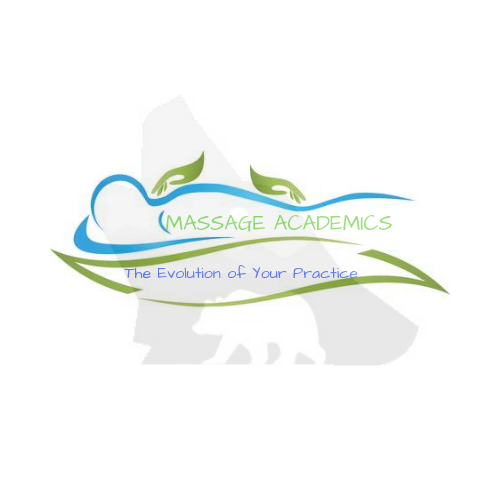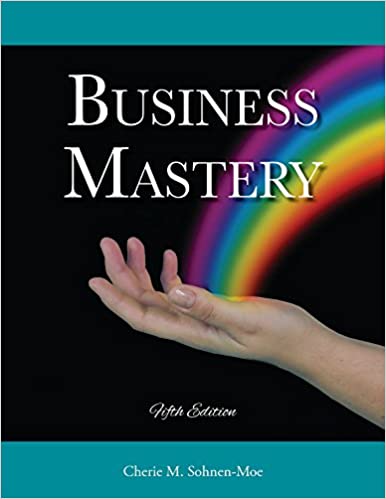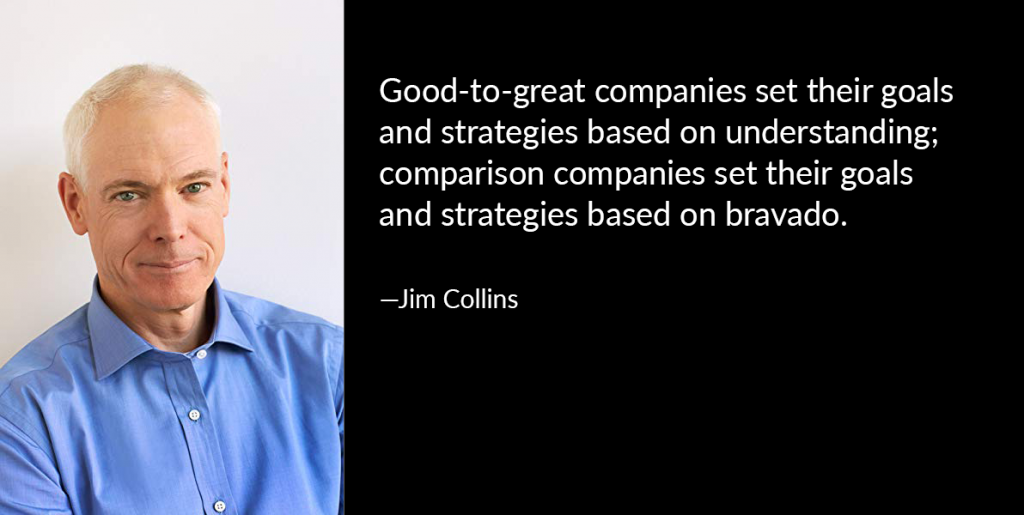
A Question for You




Before you can identify a solution, it’s important first to clarify the problem. Why is your business struggling in the first place? If you don’t have clarity on the specific challenge you’re facing, you won’t know what steps to take to save your business. Take some time to think about how you got to where you currently are.
What happened that you didn’t anticipate?
What things went wrong?
Some common problems businesses face are:
1. Market changes. Economic factors, new technology, emerging competition, and many other things can cause the market to change. Survival requires the ability to adapt to changes as they happen.
2. Failure to understand the target customer or market. If people aren’t interested in your product or service, there’s a good chance you don’t understand your customers or market. Dig deep to understand what people truly want and what motivates them to buy.
3. Poor pricing strategy. If your prices don’t match the customer demand, you won’t sell much. It’s crucial to understand what customers are willing to pay, as well as where your product sits in relation to your competitors.
4. Insufficient funds. Not having enough money on hand will quickly tank your business. You must pay close attention to cash flow, financing, sales, and more.
5. Too much growth. Growth is a good thing, except when there’s too much of it. If your business grows too fast, you might not be able to keep up with demand.

Identifying fundamental problems within your business can be a painful exercise. No one likes to be reminded of ways they’ve failed. But if you want your business to thrive during challenging times, you must be able to put your finger on the primary problems.
If you’re feeling sick and go to the doctor, what’s the first thing they try to do? Determine what is causing the illness. Only then can the doctor prescribe the proper treatment. If the doctor has you start taking random medications hoping that one will work, you won’t get any better.
The same principle is true in business. You must identify the cause of the problems before you can determine the proper solution. The sooner you identify the issues, the better.
As Jim Collins wrote in Too Mighty To Fall:
I’ve come to see an institutional decline like a staged disease: harder to detect but easier to cure in the early stages, easier to detect but harder to heal in the later stages. An institution can look strong on the outside but already be sick on the inside…

Before we get into details about specific actions to take, let’s look at the big picture. What is at the heart of every business, including yours? Customers. If you don’t have customers, you don’t have a business.
When deciding what actions to take to strengthen your business, always keep your customers front and center. If you make changes that end up hurting your customers, you’re ultimately hurting yourself. You’ll lose the people who are at the very center of your business.
Airlines are an example of what happens when you forget about your customers. Over the last decade, airlines have gone to great lengths to cut costs and increase profits. Service declined, and customers were hit with various fees they never had to pay in the past. The result? Customers are getting increasingly frustrated and fed up. It seems that everyone has an airline horror story.
Flying, which was once seen as a luxury, is now often considered a necessary evil. The moral of the story is to always keep your customers at the top of the priority list. Before making changes:

The more transparent you are with your customers, the more understanding they’ll be.
Marketer Neil Patel is an excellent example of this kind of transparency. For several years, he made a particular software available for free. Eventually, however, the costs became too high, and he was forced to start charging for portions of the software. He sent a letter to his customers, clearly explaining what was happening. He detailed his costs, making it clear that he didn’t have the resources to continue making everything available for free. Then he laid out exactly what would happen moving forward. You would be wise to follow Neil’s example.
Explain why changes are happening, when they will take effect, and how they will affect customers. During times of global crisis, it is essential to keep the focus on customers. People will remember the actions you take. If you seek to serve your customers, you will build up a vast amount of goodwill even at the expense of profit. For example, during the coronavirus crisis, many companies sacrificed financial gain for the sake of their customers:
● Many educational companies made their resources free to parents who were suddenly forced to homeschool their children.
● Audible gave away free audiobooks for kids.
● Moz provided free courses on search engine optimization to help businesses strengthen their online presence.
● Loom offered significant discounts on their video recording platform so people could stay in touch with family and friends.
● Bill.com made its platform available for free for 90 days to anyone affected by the coronavirus.
All of these companies are losing out on potential profit by giving these things away for free. But customers will remember the actions taken by these businesses and will be much more likely to support them in the future. It’s about building your brand by doing good for others instead of focusing on the bottom line. Bottom line: If you keep the focus on customers, there’s a much greater chance that your business will weather the tough times.



Running a small business isn’t easy, even during the best of times. According to the United States Small Business Association:
● 30% of small businesses fail within two years
● 50% fail within five years
● Only 25% of companies last 15 years or longer.
Any small business owner will tell you that running a small business is challenging. You have to manage a thousand moving pieces, ensuring that you stay on top of cash flow, employee performance, sales, marketing, and many other factors. Many owners struggle to manage all the different elements and their business struggles as a result. When circumstances get tough, running a business becomes an even more significant challenge.
Throughout the years, many events have occurred that placed a squeeze on businesses:
● The Great Depression
● World War I and World War II
● The Cold War
● The 2008 housing market collapse

During these difficult times, many small businesses folded under pressure. They simply weren’t able to keep going. But many companies have survived these incredibly challenging circumstances. Some of them have even thrived.
In the early 1920s, Prohibition prevented the sale of alcohol in the United States. As you can imagine, this made things difficult for producers of alcohol. But many companies adapted and came up with creative ways to save their businesses:
● Yuengling made ice cream
● Pabst made cheese
● Coors produced dinnerware
● Schlitz churned out chocolate
● Stevens Point Brewery went into the soft drink business
The point is that your business can make it through hard times. You’ll need to get creative. You’ll have to take decisive action. And you’ll need to make tough decisions. But you can do it!
In his book How The Mighty Fall, Jim Collins wrote: The signature of the truly great versus the merely successful is not the absence of difficulty, but the ability to come back from setbacks, even cataclysmic catastrophes, stronger than before. Great nations can decline and recover. Significant companies can fall and recover. Great social institutions can fall and recover. And great individuals can fall and recover. As long as you never get entirely knocked out of the game, there remains always hope.
Don’t give up. There is always hope! In this small business survival guide, you’ll discover practical steps to take that will help your business thrive amid difficult times. Doing these things won’t make things “easier,” but they could be the difference between your business surviving or dying. Ready? Let’s dive in.
If your business is struggling, it’s essential to manage your mindset. When things get tough, it’s really easy to enter a downward mental spiral. You start thinking about all the circumstances that brought you to where you are. You second guess yourself, wondering whether you would be in a better place if you acted differently. You begin to doubt your abilities and whether you can ever succeed. The more you engage in these thoughts, the worse you’ll feel.
As you work to stabilize and turn around your business, it’s crucial to maintain a positive mindset. Now, to be clear, this doesn’t mean that you pretend everything is okay or bury your head in the sand. It means that you maintain faith in your ability to bring about positive outcomes. A positive mindset also means that you are resolved not to give up. Keep striving to improve things and bring your business to a place of health. If you’re struggling to maintain a positive mindset, remember that almost every great business leader has endured struggles similar to yours:
● Thomas Edison failed thousands of times before he was able to develop a fully functioning lightbulb.
● Apple almost collapsed under bankruptcy when Steve Jobs was president.
● Bill Gates’ first business was a complete and total failure.
● Henry Ford’s first automobile business went bankrupt within a year.
Despite all these difficulties, these individuals experienced great success. Why? Because they persevered and were incredibly resilient. Steve Jobs said: I’m convinced that about half of what separates the successful entrepreneurs from the non-successful ones is pure perseverance. It is so hard, and you pour so much of your life into this thing; there are such rough moments in time that most people give up. And I don’t blame them; it’s really tough. If you want your business to succeed, you need mental toughness. You must be able to persevere in the face of difficulty and keep going even when things look bleak.
Follow these steps to overcome a negative mindset:
1. Pay attention. It’s easy to let negative thoughts swirl in your mind without putting up a fight. If you’re going to overcome these thoughts, you must be aware of what you’re thinking. You need to be able to identify unhelpful mental patterns as they occur.
2. Question. As negative thoughts arise, question them. Is what you’re thinking true? Most likely, it isn’t. Mentally push back.
3. Silence. After you’ve questioned and answered your negative thoughts, begin to silence them. Avoid letting the same thoughts steal your mental energy. You know they’re not true, so shut them down at the start. Imagine that you have a remote and that you can mute your inner critic with the touch of a button.
4. Replace. As you shut down your inner critic, fill the silence with positive, helpful dialogue. Regularly remind yourself that you are strong, overcome challenges, and grow amid difficulty. As you push through problems and challenges, remember why you got into business in the first place. What big problem were you passionate about solving? What motivated you to take the risk of starting a business instead of playing it safe and taking a corporate job? Seek to tap into the emotions and desires that initially pushed you to create your business. They can be the driving force that helps you make tough decisions and get things back on track.
Business Mastery can help you navigate these challenges and create the mindset of positivity and success!



Western forms of massage therapy are both traditional and modern. While Sports Massage, Swedish Massage, Deep Tissue Massage, and Trigger Point Massage are popular forms, they are not the only types of Western Massage available. Indeed there are many different variations of Western Massage. Some are straightforward adaptations of the essential Swedish Massage.
Others combine the traditional with a more modern approach. Some unite Eastern and Western elements to create a new entity. Among the many types of Western Massage Therapy are the following:
• Rolfing
• Myofascial Release
• Kurashova Method
• Esalen Massage
• Medical Massage and
• Reflexology.
Western Massage therapists have one major thing in common. They focus on the body. They frequently rely on a completely Western concept of medical knowledge. In most instances, it is all about the physical repair and maintenance of the body. This is certainly true of Rolfing.

ROLFING
Rolfing is the product of the work of Ida P. Rolf (1896-1979). The technique is officially the Rolfing Method of Structural Integration. It believes the body becomes worn down and shifts within the myofascial system (connective tissue). Using elbows, fingers, and knuckles, a practitioner helps to align the misaligned body tissue and joints. This is accomplished after ten sessions.
Once considered a painful experience, the methods have shifted and become gentler in their approach. Ida Rolf practiced at the Esalen Institute in Big Sur, California, before establishing her process and school- the Rolf Institute. Esalen Massage, like Rolfing, is based on Swedish Massage. Its techniques are similar.
Esalen Massage Therapy features the long strokes of Swedish Massage, combining them with rocking movements and deep tissue massage. Esalen does so in what they refer to as a caring or nurturing environment.
The environmental factor owes much to the sensory awareness approach of Charlotte Selver. Nevertheless, the focus is on physical wellness. Rolfing is also related to Myofascial Release Massage Therapy.
The Myofascial Release approach owes much to the work of John Barnes, a physical therapist. The focus here, like in Rolfing, is on the fascia. The fascia are the connective tissues found everywhere around the muscles and joints; surrounding the organs and bones to release tension and restore balance to the physical body, the practitioner massages the affected areas. Fingers, palms, forearms, and elbows are brought into play.
The therapist uses long, gliding, and smooth strokes to stretch and mobilize the fascia. Like Rolfing, Myofascial Release Massage Therapy may be incorporated into other types of Massage Therapy.
MEDICAL MASSAGE
Medical Massage is another adaptation of Swedish Massage. Medical Massage addresses only the issues of healing the physical body. Its approach and techniques tend to vary according to the needs of the patient and the directions/prescriptions of the physician.
Medical Massage practitioners work together with other health professionals to restore health by treating injuries and addressing other illnesses. The most common types of massage address deformities, tennis elbow, sciatica, knee pain, sprained ankles, and repetitive stress disorders. The technique is illness-specific.
The Kurashova Method of massage therapy has its origins in Russia. It is a known form of medical massage introduced to the United States by Zhenya Kurashova Wine. The practice consists of more than 100 strokes. Depending upon the condition requiring treatment, the practitioner uses deep or gentle strokes. In essence, this method of massage combines Medical and Sports Massage elements. It intends to treat physical dysfunctions and enhance athletic performances. It can also help a client relax or re-energize their body. It is genuinely Western in both its medical and philosophical approach.

REFLEXOLOGY
Reflexology is often considered an Eastern form of Massage Therapy. It claims to have predecessors in the wall paintings of Egypt and Chinese Acupuncture. Yet, its founders are both Americans. In the 19th century, Dr. William Fitzgerald developed a theory on the interconnection between specific points on the feet, pressure, and the impact on the body organs. He referred to 10 zones on the feet that would influence health if pressed upon properly. This is very similar to the Chinese concepts of meridians or channels and acupressure.
Mrs. Eunice D. Ingham, an American masseuse, adopted Fitzgerald’s ideas in the 1930s. She wrote a book, The Stories the Feet Can Tell, published in 1938. This spawned the massage now known as Reflexology. The intent is to restore physical health by pressing the points of the foot.
Each foot (or hand) has specific ties to an organ or other significant part of the body. Direct pressure releases the pain and helps the healing process. Reflexology naturally finds itself in combination with other forms of Western and Eastern Massage Therapy. Aromatherapy, Shiatsu, Sports Massage, Chinese Massage Therapy, and Yoga other practices may include Reflexology as a technique. In some ways, Reflexology provides the ideal example of West meeting East.

The standard form of Eastern Massage Therapy is Chinese or Asian Massage Therapy.
The most standard is acupressure. Its approach is strictly based on the philosophical and medical concepts from the East. It perceives the healing of a body to be realized only with the involvement of the life force. This is the Chi or Qi in Chinese and the Ki in Japanese.
In Traditional Chinese or Japanese Massage Therapy, the practitioner works with the energy or life force to heal the body. It is all about balancing the energy within the body. It is also about creating and maintaining a physical, mental, and emotional balance.
In the traditional form of Asian massage therapy, the therapist strives to restore a balance among all aspects of the body. Moreover, he or she accomplishes this using a system based on a concept of meridians or pathways. A blockage of any of the 12 meridians or 8 channels, according to Acupressure theory, will cause many adverse effects such as disease and emotional trauma. By placing pressure on specific points, the practitioner clears the channels. This allows free flow of energy, balance is restored, and health improves.
Other traditional versions of Western or Asian massage therapy include
• Amma (Japan)
• Tuina or Tui Na (China) and
• Thai Massage.
All these forms of Asian massage rely on the philosophical and medical approaches of the East. Tuina, for example, works with specific acupressure points to stimulate the joints and muscles. Techniques are traditional Chinese brushing, kneading, rolling, and pressing.

As you work to make your career dreams a reality, Section 1 of Business Mastery explores how to set a strong foundation. It prepares you to decide your career based on a clear sense of who you are and what you want to accomplish.
Chapter 1 looks at ways to increase your self-awareness and make self-knowledge a powerful ally for the work ahead of you. This chapter mainly consists of activities to help you assess your current state, identify your strengths and challenges, and clarify your values. The chapter finishes with an exploration of your ideal future.
Chapter 2 helps you transform the insights you gained from Chapter 1 into the activities of goal setting, strategic planning, and follow-through. These three key activities form the common denominator among successful people in all fields. This chapter assists you in developing a mission statement and goals—and translating them into actions vital to your business’s daily, weekly, and monthly growth. We then look at how savvy business people use strategic planning to create a roadmap to success.
Chapter 3 helps you define what success means to you and supports you in a fearless examination of roadblocks that may stand in your way. You’ll also find tips on how successful people manage their time, track results, and handle risks wisely.
Chapter 4 looks at how to ensure that your career lasts for the long term and grows as you do. It identifies time-tested ways to enhance career longevity and avoid burnout. The chapter also explores ways to develop a strong support system to help you stay on track and true to your vision.
In Section 2 of Business Mastery, the theme of intentional excellence takes center stage. Intentional excellence requires unflinching honesty and courage, and it results from making your integrity central to whatever you do. It’s the result of the consistent and conscious effort made visible in the behaviors, interactions, and relationships you establish within your practice.
Chapter 5 focuses on measures of excellence that are different from markers of success like client numbers and bank balances. We start with a look at professional ethics, which exist not to catch people in wrongdoing but to guide practitioners toward greatness and present guidelines for recognizing ethical dilemmas and resolving them. This discussion flows naturally into the key role that a professional image plays in building a successful practice. The last two topics of the chapter consider how goodwill and social responsibility bring excellence into
your practice—as you share your talents, time, and resources to support the causes closest to your heart.
Chapter 6 discusses why good communication skills are essential in business and highlights ways to fine-tune key skills, such as active listening and reflective feedback. It looks at the power of first impressions and rapport building, as well as several common barriers to effective communication. It includes useful tips on how to handle the inevitable conflicts and difficult situations that are part of professional life. This chapter also offers practical insights into how to conduct effective client interviews. Excellent recordkeeping is another aspect of good communication, so we discuss SOAP and Wellness formats for documenting client sessions and charting progress. You will also find a wealth of practical tips and resources to develop excellent communication skills and use technology appropriately.
Section 3 of Business Mastery provides an insider’s look into career opportunities in the wellness field. This section provides an overview of wellness career trends and information to help you determine if working as an employee or being self-employed is the best option for you. You’ll also gain valuable insights into different work environments so that you can approach your career choices with credibility and confidence.
Chapter 7 starts with a statistical review of complementary and alternative healthcare usage and then follows up with an overview of the trends in wellness careers. It discusses why career focus is essential and the steps involved in clarifying that focus. The topics of employment, self-employment, and independent contractor status are explored, including the pros and cons of each choice. The chapter wraps up with an activity to assist you in defining your ideal career.
Chapter 8 provides you with insights into working in spas and salons, whether you are an employee or an independent contractor. It highlights what you can expect to find in these environments, such as the corporate culture, training requirements, scheduling concerns, and seniority issues. It also includes success tips for each of the most common types of spas.
Primary healthcare settings offer a variety of CAM services on both an inpatient and outpatient basis. This translates into a growing number of career placement opportunities.
Chapter 9 focuses on what to expect when working in primary healthcare settings and provides suggestions to enhance your experience in this environment.
Chapter 10 explores the advantages and disadvantages of group practices. It examines the key aspects of this option and includes overall tips for success in group practice. The chapter then identifies specific concerns and success strategies for working in a wellness center or a specialty center.
The majority of practitioners work at least part-time as sole proprietors. Chapter 11 takes an in-depth look at the challenges and opportunities with private practice options, such as working in a home office, commercial office space, primary care provider’s office, fitness center, or on an outcall basis.
Section 4 of Business Mastery provides information on how to find and keep a job. Even if you plan on being an independent practitioner, you never know when you might want to work as an employee, even if it’s just on a temporary or part-time basis.
Chapter 12 covers the fundamental aspects of employment. The chapter begins with a section on career success secrets and then describes how to find potential employers, research companies and hone your interviewing skills.
Successful job seekers assemble an employment kit with all of the items needed to help procure an interview and get hired. Chapter 13 reviews the key items to put in that kit and focuses on how to write a top-notch résumé and accompanying cover letter.
Chapter 14 reviews how to effectively navigate employment contracts and, when the time is right, renegotiate terms (e.g., a raise, booking seniority, benefits, advancement). The chapter concludes by covering ways to excel in a performance review.
Studies show that most business failures are due to improper management or undercapitalization, not because the owners were underskilled in the performance of their job duties.
Section 5 of Business Mastery provides the necessary groundwork for a business to grow and prosper. It encourages you to take the time to master the basic business fundamentals so you can maximize your chance of success and owners.
Chapter 15 looks at the critical elements involved in a business start-up. It covers how to assess the feasibility of your business idea, find start-up financing, determine the laws and regulations you must follow, choose a business name, and determine client fee structures. The chapter closes with exploring the option of buying a practice.
Choosing an appropriate business location can dramatically impact your success. Chapter 16 covers the essential elements to consider when looking for a location, negotiating a fair lease, and navigating zoning, insurance, and licensing regulations. It also explores how to design the interior office space. For practitioners on the move, the chapter closes by discussing how to manage the relocation of your practice, near or far.
Avoid common pitfalls that plague many small businesses.
Finally, Chapter 17 provides detailed instructions for creating your business plan—an indispensable tool for mastering both short- and long-term success. The chapter details the significant components of a business plan, including creating a financial forecast to realistically assess the finances required to launch and maintain your business. We also include a guide of additional tips and valuable resources to help you create a solid business plan.
Section 6 of Business Mastery focuses on the nuts and bolts of business operations, including tips and information to help you run your business smoothly and efficiently and how to transition it. While much of the information in this section is geared toward self-employed practitioners, some of the topics are key to all practitioners.
Even if you plan to be an employee, this information helps you understand what’s involved in establishing a business and the costs of running it, thus giving you a better appreciation of what an employer offers. This knowledge is also crucial if you plan on moving into management.
Chapter 18 focuses on office management. We start with policies. Although not many people thrill at the thought of developing policies and procedures, this chapter shows how they’re like the frame of a house—a necessary part of building a house that lasts and a business that thrives. You’ll find tips on how to write policies and procedures, organize your office, and make smart technology choices.
Chapter 19 examines the aspects of actually managing a practice, including complying with HIPAA regulations and handling insurance reimbursement. Also included are valuable insights into contract basics, effective negotiation, and conflict resolution.
Chapter 20 presents the essentials of financial management. It provides concrete information to help you keep the books, prepare financial reports, and understand tax laws. You’ll also learn how to use barter to exchange goods and services with others. Finally, the chapter covers the basics of retirement planning and offers several helpful resources to assist you in planning for your future financial stability.
Product sales are an excellent diversification method, and the profits boost your bottom line while serving your clients. Additionally, many employees are required to sell products. Chapter 21 explores how to sell products ethically. It covers how to choose appropriate products, provides ideas on selling and marketing products, and closes with tips on effective displays.
For growing practices, Chapter 22 provides insights into when and how to hire support or professional staff. It also explores the characteristics of a good employer, examines the regulations regarding employees and independent contractors, and guides you on managing your team successfully.
Chapter 23 guides you in consideration of transitioning your practice. It starts by highlighting major decision-making pinnacles and discusses exploration and evaluation techniques. The first option covers the variety of ways you can transfer or sell your practice and provides a step-by-step process to achieve the best outcome possible. The chapter concludes with a checklist for closing your practice, including steps to take before closing and after the official closing.
Section 7 of Business Mastery explores how to master the marketing tasks that are essential to your success. Successful practitioners know who they want to work with, understand how to find those potential clients through appropriate marketing techniques, and attract the desired clients by clearly and engagingly describing what they do.
Practitioners maintain a thriving practice by being client-centered:
What’s the best way to begin? Like building a house, it’s wise to start with a foundation and build from there.
Chapter 24 provides that foundation by detailing how to identify your target markets, develop a marketing plan, and take action steps to attract new clients and build a thriving practice. The chapter also introduces a virtual toolbox of marketing concepts, such as positioning, branding, and differential advantage, along with valuable insights into how you can put them to work to grow your business.
The majority of marketing endeavors that practitioners utilize fall under the categories of promotions and community relations. Chapter 25 provides the framework for a solid house by giving a primer of low- and no-cost marketing techniques focusing on promotions and community relations.
Chapter 26 is analogous to the furniture in the house. This chapter highlights the primary marketing materials you need, along with tips on how to design and incorporate them.
Maintaining an effective online presence is like providing the power to run your house. Chapter 27 explores the critical elements of designing an effective website and engaging with your community through social media and other online activities. Think about advertising techniques as a sign on your front yard inviting people in.
Chapter 28 highlights the significant print and broadcast media advertising venues. It also includes tips on content and design of display ads, with before-and-after examples.
Chapter 29 helps you to navigate the media and get them to knock on your door. It covers how to develop media relations, the steps involved in getting interviewed, how to write a press release, and the key elements in media kits.
Chapter 30 rounds out the house design by focusing on creative ways to retain clients. It explores how exceptional customer service and incentive programs foster long-term client relationships and how you can put customer service action plans to work to enhance your business success.


You cannot copy content of this page
Recent Comments